Farmers at a recent AHDB Cereals & Oilseeds’ Newport Monitor Farm meeting debated the potential benefits and challenges offered by two different no-till systems.
Representatives from two manufacturers spoke to arable farmers and demonstrated their drills, one with tines and one with discs, at the event held at Howle Manor.
The Newport Monitor Farm is hosted by Sam Watson-Jones, a fourth-generation farmer growing feed wheat, OSR, oats and potatoes on a 485ha farm near Newport, Shropshire. The farm sells primarily to local grain merchants and Sam also has 300,000 broiler chickens.
He currently operates a conventional system at the 485ha Shropshire farm, but, motivated by low prices and concerns for the soil, is considering changing to no till.
He grows feed wheat, OSR, oats and potatoes on light, sandy, loamy soils.
Various establishment systems exist in the Shropshire area, from fairly aggressive min-till systems with a combination drill, to no-till drills. Like many other farmers, Sam is looking at his costs to see where savings can be made, as well as taking into consideration the health of his soils.
With ex-farm feed wheat prices just above £100/tonne, cost-saving opportunities featured highly in discussions during the day.
Sam said: “We wanted a series of Monitor Farm topics that looked at the soil. We’re making everything in our arable system soil-focused, so looking at direct drilling seemed like a logical way to go, with less disturbance of the soil. Of course we’re also trying to save some money with it.
At the moment, Sam uses a set of discs to establish a chit of weed seeds, followed by a sumo trio and a 3m Väderstad drill.
Soil and cost management have been a running theme at the Newport Monitor Farm, with previous meetings covering joint venture farming, energy production and wheat markets.
Key points from the meeting were:
- Making fewer passes on the field could save fuel costs
- It is vital to get drainage right
- No-till on Sam’s land could increase worm counts but also risk increasing slug pressure
- For Sam it would be vital to establish a good seedbed before drilling
Howle Farm’s agronomist, Bill Jones, said: “As an agronomist, I welcome innovation. Anything that would improve soil structure is a good thing. The light soils around here are becoming rather structureless: it’s been a long time since there were livestock rotations here and the soils have had quite a lot of potatoes and sugar beet in them. Anything that would put organic matter back into the soils would be good.
“In order to make money in low cereal prices at the moment, we have to have a consistent yield, and we have to make sure that we have an even crop across the field.
“One of our fears is slug damage – we need to think about slug control and avoid getting uneven crops.”
During the meeting, the group saw demonstrations of the two different drills – one disc and one tine – in a field of Sam’s which was yet to be drilled.
Simon Weaving, of Weaving Machinery, said: “On this light sandy, loamy soil, the benefits of a disc drill would be less soil erosion when it’s wet, building organic matter, and reduced costs.
“When this soil gets wet and sticky it might be challenging, but then when you’re going no-till you’d want to be going onto the land earlier anyway.”
Jeff Claydon, Claydon Drills, added: “Providing you check for slugs and spray off weeds, you could go straight in with a tine drill and establish the crops cheaply, with one pass. The time saving could be fantastic.
“In any direct drill system it’s absolutely crucial to do stubble management.”
The next meeting at the Newport Monitor Farm is on 26 January 2016. To attend the meeting, please email Richard Meredith on richard.meredith@ahdb.org.uk or call 07717 493015.




